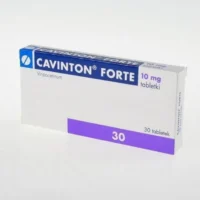Description
Zolafren (Olanzapine) Coated Tablets 5 mg. №30
Ingredients
- Active ingredient: Olanzapine 5 mg.
- Other ingredients: lactose monohydrate, maize starch, povidone, talc, magnesium stearate, hypromellose, titanium dioxide (E171), macrogol, and iron oxide yellow (E172).
Dosage
Recommended dosage: The usual starting dose is 5 mg to 10 mg once a day. Dosage adjustments should be made conservatively in increments of 5 mg to 10 mg per day to maintain efficacy and minimize the risk of side effects.
Indications
Zolafren (Olanzapine) coated tablets are indicated for the treatment of schizophrenia and bipolar disorder. They are also used as maintenance therapy for the prevention of recurrence in bipolar disorder.
Contraindications
Do not use Zolafren (Olanzapine) coated tablets if:
- You are allergic to olanzapine or any other ingredients in the product.
- You are taking certain medications that may interact with olanzapine.
- You have a history of certain medical conditions such as liver disease, narrow-angle glaucoma, or cardiovascular disease.
Directions
Take Zolafren (Olanzapine) coated tablets exactly as prescribed by your healthcare provider. Swallow the tablet whole with a glass of water. Do not crush, chew, or break the tablet.
Scientific Evidence
Zolafren (Olanzapine) has been extensively studied for its efficacy in the treatment of schizophrenia and bipolar disorder. Clinical trials have shown that olanzapine is effective in reducing symptoms of psychosis and mania associated with these conditions. Research published in the Journal of Clinical Psychopharmacology demonstrated the superior efficacy of olanzapine compared to other antipsychotic medications in the management of schizophrenia.
Additional Information
It is important to follow up regularly with your healthcare provider while taking Zolafren (Olanzapine) coated tablets to monitor for any potential side effects or changes in your condition. Inform your doctor about any new or worsening symptoms. Avoid alcohol while taking olanzapine as it may increase the risk of side effects.
Pharmacologically, olanzapine works by blocking the action of dopamine and serotonin receptors in the brain, which helps to regulate mood and behavior. This mechanism of action contributes to its effectiveness in managing symptoms of schizophrenia and bipolar disorder.
Compared to similar drugs in its class, olanzapine has shown comparable efficacy with a potentially lower risk of certain side effects. However, individual responses to medication may vary, and it is essential to work closely with a healthcare provider to find the most suitable treatment option.





